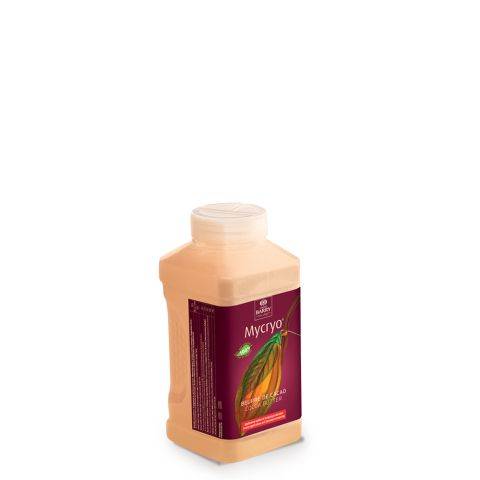Tempering with Mycryo

Since the invention of Mycryo® cocoa butter, tempering chocolate has become easy. This method has many advantages:
- It doesn’t need a lot of material.
- Just add 1% Mycryo® cocoa butter for example:
- 10 g for 1 kg of chocolate when this one is at the right temperature.
- Your chocolate stay perfectly fluid.
- You can work the chocolate for longer before it gets thick.
- Melt the chocolate at 40-45°C (microwave or bain-marie).
- Leave the chocolate to cool (to 34-35°C for dark chocolate or 33-34°C for milk, white or coloured chocolate) at ambient temperature.
- Add 1% Mycryo® cocoa butter, that is 10 g per 1 kg of chocolate.
- Mix well.
- When the coverture has reached an ideal temperature (31-32°C for dark chocolate or 29-30°C for milk, white or coloured chocolate), use the product.
- To use the chocolate for a longer time, keep it at 31-32°C in the case of dark chocolate or 29-30°C in the case of milk, white or coloured chocolate.
Why do you need to temper chocolate?
Tempering chocolate means pre-crystallising the cocoa butter in the chocolate. This has everything to do with the temperature at which the chocolate is processed. When tempered, the cocoa butter is transformed into a stable crystalline form. This is what guarantees the hardness, shrinkage force and brilliance of the final cooled product. If you melt chocolate normally (at ±40°C) and let it cool again until it reaches its processing temperature, you will not obtain a brilliant result. The three factors that play a role during tempering are duration, temperature and movement. If you use a special technique to bring the chocolate up to its temperature you will achieve the expected result. This is what is meant by tempering: bringing the chocolate up to the temperature at which you wish to work so that it contains sufficient stable crystals.






